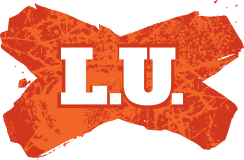Super League will expand to 14 teams in 2026: and clubs are already queuing up to state their case about why they should be in the mix.
It’s still possible that one of the Championship’s top four will find their way into the top-flight through the IMG gradings system, with Salford believed to be in real danger of dropping out and a number of teams closing in on their score.
But away from that, two more spots will open up via an independent panel. That panel will examine all aspects of a club – on the field and off it – before determining who makes the cut.
It’s likely some existing Super League clubs will have to go through that route too, if for nothing other than an insurance policy should they fail to make the top 12 with IMG.
But we’ve looked at the Championship’s top four – who all want in for 2026 – and examined the pros and cons of both.
York Knights
The Knights are favourites for a number of reasons – with the club quietly confident they can push for the top 12 in the IMG gradings and take any independent panel out of their own equation.
The positives for York’s case? They are starting to build a Super League squad; the signing of Paul Vaughan underlines that. They’d likely be one of the more competitive teams who were coming up, though how competitive that is remains to be seen.
They represent positive expansion, with a new area for the game to tap into in North Yorkshire. They also appear to have financial backing and of course, they have an elite-standard facility in a location that would represent a real destination trip for Super League supporters on their travels.
They also have a thriving Women’s Super League team: which makes them an intriguing prospect when it comes to hosting double-headers that could captivate the attention and become events.
The concern? Their crowds, you could argue – though it’s unclear what promotion into Super League would do for York and the surrounding areas given how long it’s been since they were in rugby league’s top flight.
There’s also work to be done on the ground in York and North Yorkshire in terms of junior development. It’s started, and is picking up at pace, but York are definitely behind most Super League clubs in that regard.
Bradford Bulls
Bradford are another club who have strong positives to consider. Across their whole organisation they are perhaps representative of a Super League club. They run teams in almost every discipline of the sport; men’s, women’s, PDRL and LDRL to name just a few. They are on the up in that regard.
Their academy is also strong, and is still providing players to this day who are Super League standard: Wakefield Trinity’s Jayden Myers is a recent example of that. Bradford also have a strong squad, and have the financial capability to potentially be a strong side if they were promoted.
Of course, the one real negative does not really need explaining too much: Odsal. While Bradford’s vocal supporters would tell you the stadium ticks all of the IMG boxes – and it does – they could surely not tell you with a straight face it was a Super League venue.
Bradford’s crowds are also on a par with York’s and while there is an expectation they would boom if they returned to Super League, that’s not a guarantee. It’s been so long since the Bulls were pulling in five-figure crowds in the top-flight, it’s not automatic that all those lapsed supporters return.
But Bradford as a club, and an area, clearly has potential to be a Super League team.
Toulouse Olympique
The merits of Toulouse are certainly different to the other English teams pushing for Super League – and that makes them a very unique case.
The prospect of a French derby in Super League is incredibly exciting, and could have commercial and financial implications if done right and over a prolonged period of time.
Toulouse also bring expansion on their side, and the prospect of more French players being exposed to elite-level rugby league can surely only be good for the international aspect of the sport.
The primary concern for Toulouse comes from the boardrooms of Super League. Some owners believe they do not bring anything in terms of adding value on the existing broadcast deal, with the French clubs still not delivering their own deal in their own right, too.
Toulouse averaged just a fraction under 5,000 in their one season in Super League. Allow them time to grow and build, and that number could rise.
Oldham
The outsiders, at least for 2026, are Oldham. It feels somewhat unlikely at this stage that a club ranked 27th on the gradings this time last year will do enough to convince a panel they are ready for Super League now: though their gradings score will significantly rise.
Oldham have aggressively recruited a squad to compete at the top of the Championship at least in 2026. Names like Jonny Lomax, Jack Hughes and Josh Charnley have been linked with moves. More big names will likely join, too.
There is financial backing and a long-term commitment to grow Oldham, and they have a facility in Boundary Park that could host Super League and not look out of place.
The big concern for Oldham would be: is it too soon for them? It’s a fair argument that they need at least one more year competing at the top of the Championship and showcasing their growth on and off the field.
London Broncos
Perhaps the most intriguing club of them all in this debate is London. In the eyes of some – including club officials who have spoken to
Love Rugby League – the Broncos are strong favourites to get back in the big time in 2026.
On the face of it, there’s logic behind it. After all: it’s London. It’s expansion, and no matter what people think, having a team from the capital in your elite competition makes you more viable and attractive a proposition.
But that team has to be strong, and thriving. Which London hasn’t been for quite some time. They’re still in a state of flux following the Gary Hetherington-led takeover and the events of the last 18 months have set them back a touch in areas where they were traditionally strong, such as junior development.
Those pathways were hit hard by the financial problems the Broncos had though they are being rebuilt.
However, London have a premiere venue, as anyone who has been to Wimbledon can testify to.
We need a strong London, not just a London. Whether they’re strong enough to come back in for 2026 remains to be seen but you get the feeling the Broncos may well be more likely to have a chance taken upon them than others.
Multiple Championship teams are pushing to be in an expanded Super League in 2026. But what are the pros and cons of all clubs in the mix? Here's our take.

www.loverugbyleague.com



